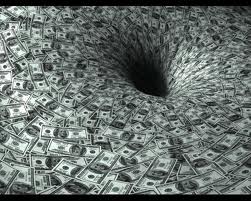By Mona Charen • National Review
When 450 students arrived at Anacostia High School in the District of Columbia’s southeast neighborhood on April 4, they found that few of the sinks or toilets were functioning and the cafeteria was flooded. They were advised by the Department of General Services to use the facilities at a middle school two blocks away until repairs could be completed.
Exasperated teachers organized an impromptu, hour-long walkout to protest, which is why this particular dysfunction made the news. A casual reader might note the plumbing fiasco and chalk it up to neglect of poor students and poor neighborhoods. That is the interpretation urged by D.C. Council member Trayon White, Sr. who attended the walkout and declared that, “The students and teachers need support from the leaders of the city because of the constant neglect happening at Anacostia.”
But it’s far from so simple. The District of Columbia has one of the worst-performing public-school systems in the country. It is also one of the most generously funded. Anacostia High School itself received a $63 million renovation in 2013. According to the Department of General Services website, the project included “Full modernization and renovation of the existing high school using an adaptive re-use approach. Modernization…included exterior restoration, roofing, systems replacement, ADA improvements, phased occupancy, technology enhancements, and sustainable design initiatives.” But not, it seems, working toilets.
Average per pupil spending nationwide is about $11,000 per year, but according to the National Center for Education Statistics, Washington, D.C. was spending an average of $27,460 per pupil in 2014, the most recent year for which data are available. While most states spend about half of their funds on instruction — California is typical, expending $11,043 per pupil, with $5757 going to instruction — the District spends only about a third of its total on instruction. It vastly outspends all of the other states. The next biggest spender is New York at $21,213 ($14,124 on instruction).
Where does the money go? “A great chunk seems to wind up in administration,” notes the CATO Institute’s Neal McClusky. Even cautioning, as McClusky does, that D.C.’s administrative costs may look elevated because it is required to do everything a state would do, the spending still far exceeds small states like Montana and Wyoming.
Teachers in D.C. are not slighted. The National Education Association lists Washington, D.C. as offering the highest starting teacher salary in the nation.
Ask the average voter if we should be spending more on K–12 education and you will get thunderous agreement, though people become a little less enthusiastic when they learn the true scope of current spending. While education spending has tripled over the past 40 years, student performance has remained flat.
But back to Anacostia High. Why in the world would a newly renovated school have malfunctioning plumbing? If you suspect corruption, I’m with you. According to the City Paper, between 2000 and 2013, the District spent more than $1.2 billion on school modernization. Yet auditors could not find evidence that $168,997,484 worth of expenses had been approved. City Paper quotes the audit as surmising that, “The District may have paid fraudulent or inaccurate invoices.”
Anacostia High School’s enrollment is 100 percent minority and 100 percent poor. If these students are to have any shot at a decent life, they need to earn at least a high-school diploma. Yet only 19 percent of seniors are on track to graduate this year. Is it all the responsibility of the public-school system? Clearly not. These kids come overwhelmingly from disadvantaged neighborhoods and single-parent families. Their environments are characterized by disorder, crime, and drug abuse.
But if parents, religious leaders, and yes, community activists were serious about confronting this decades-long disaster, they would look to what works. There are schools in D.C. with healthy graduation rates, followed by college attendance. Some are regular public schools, but more are charters. Many of the successful schools draw from the same pool of applicants as the failing ones.
It’s appalling that the plumbing failed at Anacostia High, but the far greater travesty is the non-education it is providing to the neediest kids. Schools should be launching pads, not sink holes.
